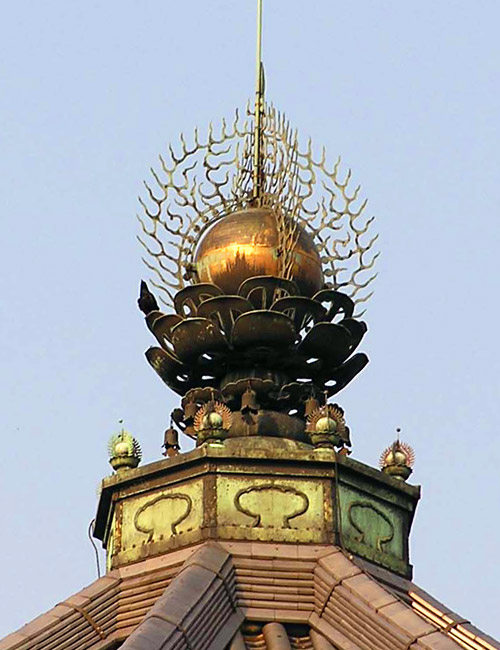|
||
 |
||
The roban also provided the base for a complete spire, which was composed usually of seven distinct parts placed on top of the base section. It also furnished a base for various teardrop or onion-shaped forms called houju (precious jewel). Roban made in the early centuries were quite low compared to the height of the later inverted bowl-shaped forms *fukubachi «, placed on the roban. The proportions of the roban changed in later periods. It was taller and was often decorated with a multifoil pattern *kouzama i·Ô. Roban are made of bronze, stone or tiles.

Koufukuji Nan'endou »ì~° (Nara)
@
(C)2001 Japanese Architecture and Art Net Users System.@No reproduction or republication without written permission.
fÚÌeLXgEÊ^ECXgÈÇASÄÌRec̳f¡»E]ÚðֶܷB

